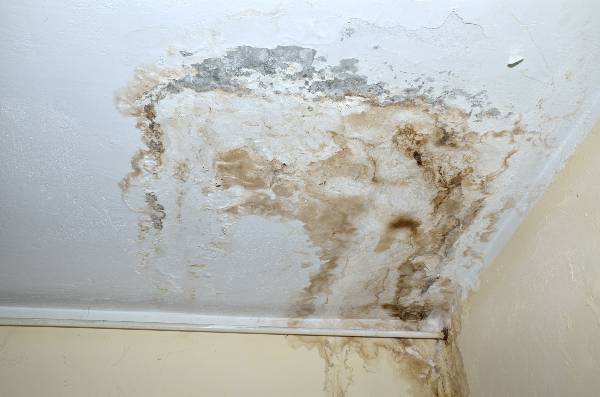6 Ways to Find Concealed Water Leakages in Your Residence
6 Ways to Find Concealed Water Leakages in Your Residence
Blog Article
We've stumbled on this post on Detecting hidden plumbing leaks below on the net and accepted it made good sense to relate it with you on this site.

Early discovery of dripping water lines can mitigate a potential calamity. Besides saving you cash, it will certainly lessen the worry as well as irritation. The moment you locate a leak, calling your plumber for repairs is the most effective solution. Some small water leaks may not be noticeable. If you can not detect it with your naked eyes, here are some hacks that aid.
1. Check Out the Water Meter
Every residence has a water meter. Examining it is a surefire way that helps you uncover leakages. For starters, shut off all the water resources. Ensure no one will purge, make use of the tap, shower, run the cleaning equipment or dishwashing machine. From there, most likely to the meter and watch if it will alter. Considering that nobody is utilizing it, there need to be no motions. That indicates a fast-moving leak if it moves. If you spot no modifications, wait a hr or two and inspect back once more. This suggests you may have a slow-moving leakage that can also be below ground.
2. Inspect Water Intake
Assess your water bills and track your water usage. As the one paying it, you should discover if there are any type of inconsistencies. If you detect sudden changes, despite your consumption coinciding, it indicates that you have leakages in your plumbing system. Remember, your water costs should drop under the same variety every month. An abrupt spike in your bill shows a fast-moving leak.
On the other hand, a stable boost on a monthly basis, even with the very same behaviors, shows you have a slow-moving leakage that's additionally gradually rising. Call a plumber to completely inspect your property, particularly if you really feel a cozy area on your floor with piping underneath.
3. Do a Food Coloring Test
When it pertains to water consumption, 30% comes from toilets. Examination to see if they are running effectively. Decline specks of food shade in the container and wait 10 mins. If the color in some way infiltrates your bowl during that time without flushing, there's a leakage between the storage tank as well as bowl.
4. Asses Exterior Lines
Don't neglect to examine your outdoor water lines also. Needs to water permeate out of the link, you have a loosened rubber gasket. One little leakage can waste bunches of water and also spike your water bill.
5. Assess the situation and inspect
House owners need to make it a practice to examine under the sink counters and also inside cupboards for any bad odor or mold growth. These 2 warnings show a leakage so prompt focus is called for. Doing regular inspections, even bi-annually, can conserve you from a major issue.
If you know your house is currently old, keep a careful eye on your heaters, hoses, pipelines etc. Check for stainings and weakening as most pipelines and devices have a life span. They will additionally naturally wear away as a result of damage. Do not wait for it to intensify if you suspect dripping water lines in your plumbing system. Call a specialist plumber today so you do not wind up with an awful mess in your home.
Early detection of dripping water lines can minimize a potential calamity. Some little water leakages might not be visible. Examining it is a surefire method that helps you uncover leakages. One tiny leakage can lose tons of water and surge your water costs.
If you suspect leaking water lines in your plumbing system, don't wait for it to rise.
WARNING SIGNS OF WATER LEAKAGE BEHIND THE WALL
PERSISTENT MUSTY ODORS
As water slowly drips from a leaky pipe inside the wall, flooring and sheetrock stay damp and develop an odor similar to wet cardboard. It generates a musty smell that can help you find hidden leaks.
MOLD IN UNUSUAL AREAS
Mold usually grows in wet areas like kitchens, baths and laundry rooms. If you spot the stuff on walls or baseboards in other rooms of the house, it’s a good indicator of undetected water leaks.
STAINS THAT GROW
When mold thrives around a leaky pipe, it sometimes takes hold on the inside surface of the affected wall. A growing stain on otherwise clean sheetrock is often your sign of a hidden plumbing problem.
PEELING OR BUBBLING WALLPAPER / PAINT
This clue is easy to miss in rooms that don’t get much use. When you see wallpaper separating along seams or paint bubbling or flaking off the wall, blame sheetrock that stays wet because of an undetected leak.
BUCKLED CEILINGS AND STAINED FLOORS
If ceilings or floors in bathrooms, kitchens or laundry areas develop structural problems, don’t rule out constant damp inside the walls. Wet sheetrock can affect adjacent framing, flooring and ceilings.
https://www.servicemasterbyzaba.com/blog/how-to-detect-water-leakage-in-walls/

I came across that blog posting on Finding hidden leaks when browsing on the web. Make sure you take a moment to promote this blog posting if you appreciated it. Thanks a lot for your time. Come back soon.
Report this page